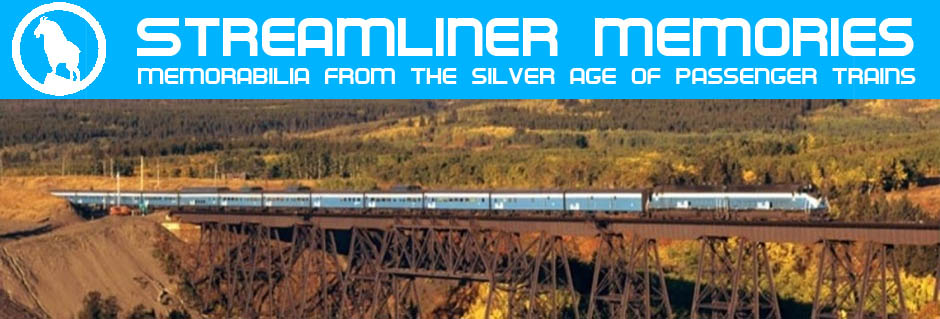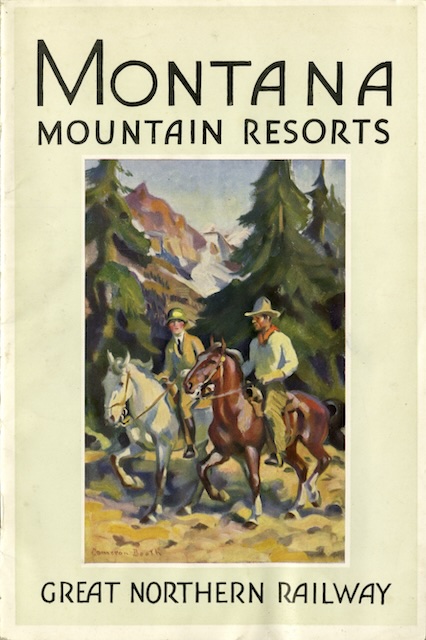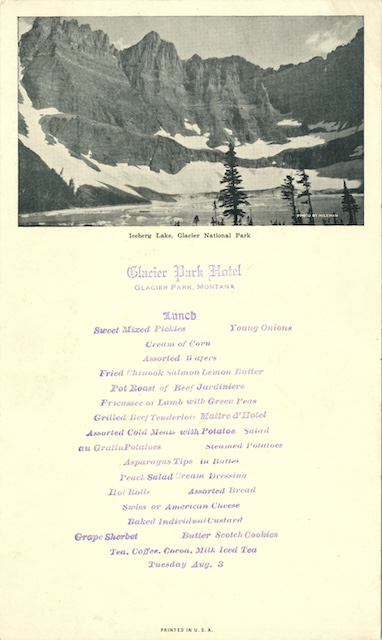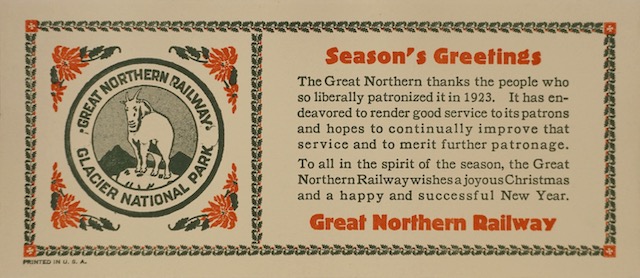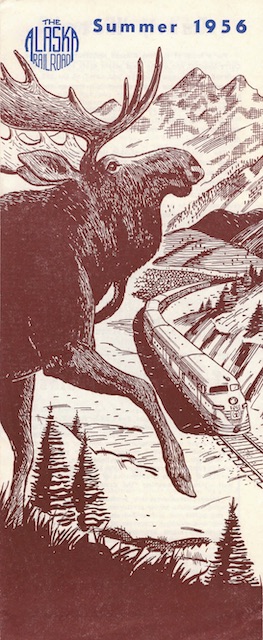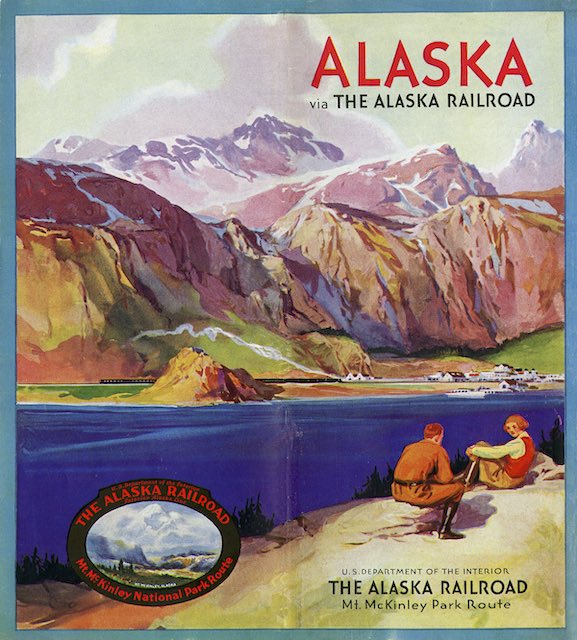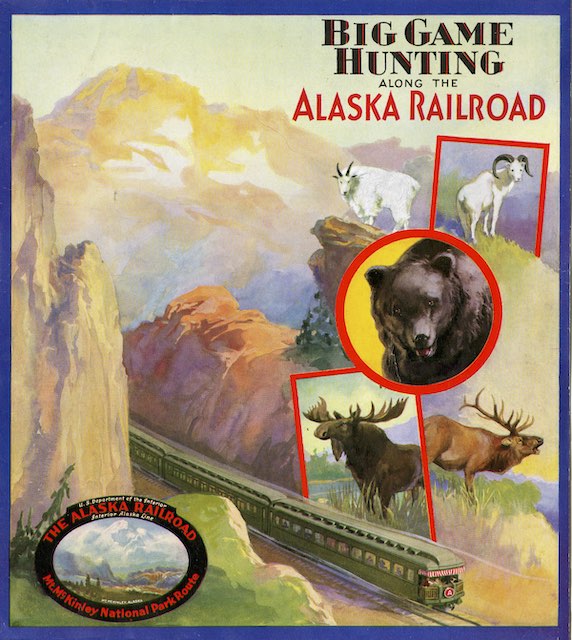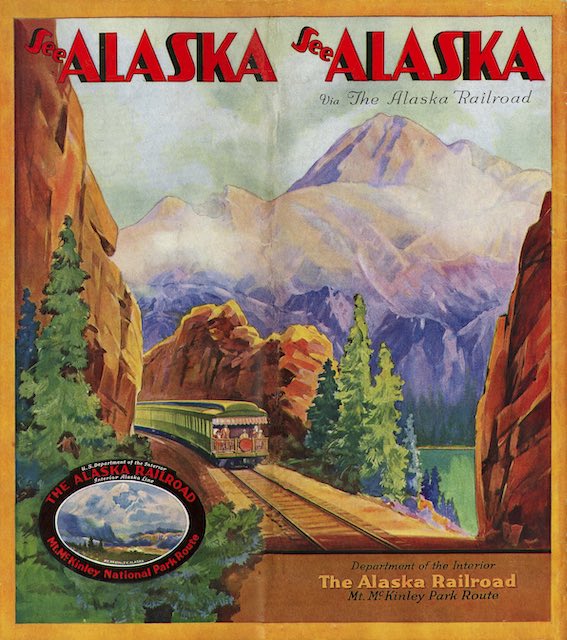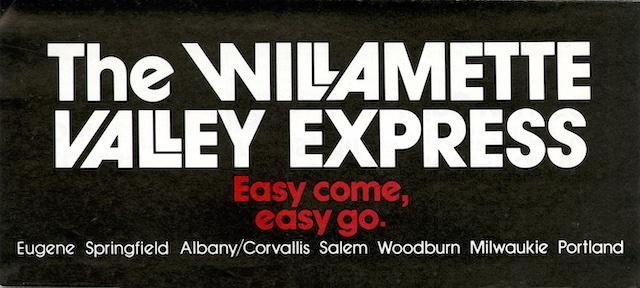This timetable was published nine months after the January timetable shown here three months ago and has the same front cover. When writing the today’s post, I was embarrassed to discover that the cover of the PDF for that one was misaligned; I’ve fixed it.
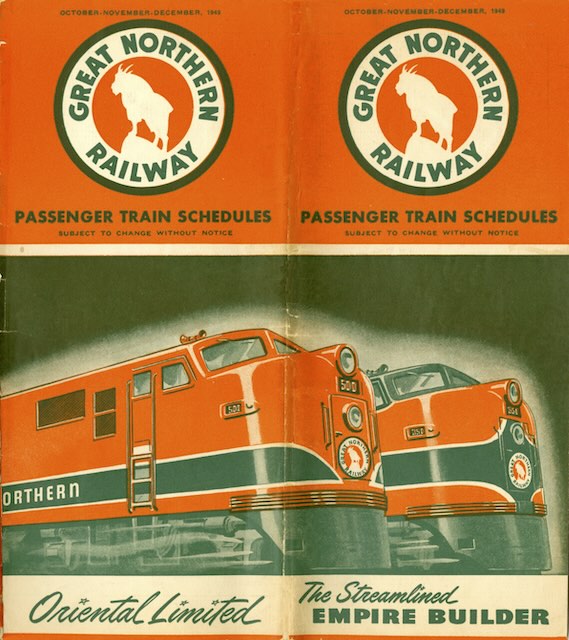 Click image to download a 28.3-MB PDF of this 44-page timetable.
Click image to download a 28.3-MB PDF of this 44-page timetable.
While the back cover of the January timetable advertised Glacier National Park, this edition offers the slogan, “East or West, Great Northern’s Best.” This could mean either that GN’s east- and westbound trains were the best it had to offer or that GN was the best way to go east or west. Of course, the second meaning was the one the marketing department had in mind but I’m sure they didn’t mind that there was a double meaning.
